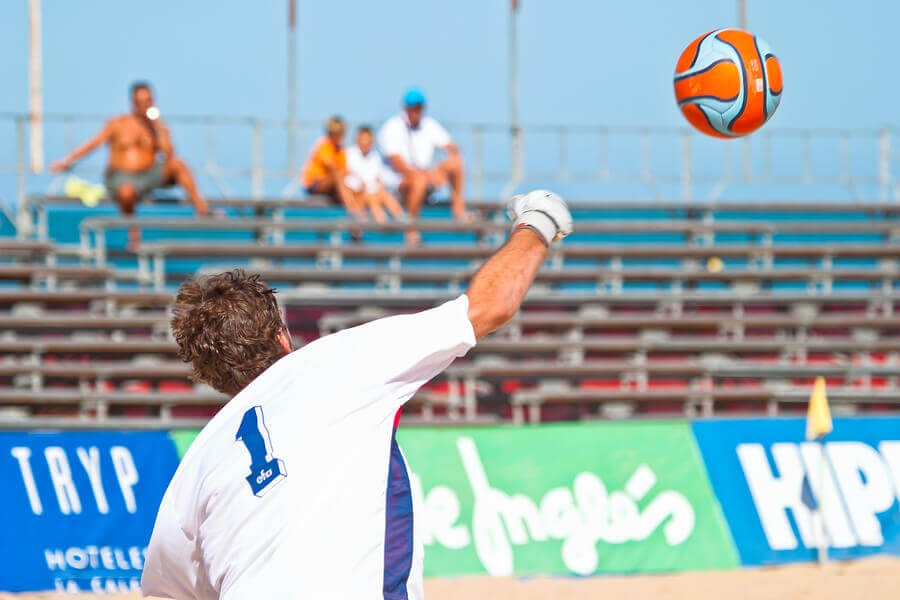Brain Stimulation in Sport: The New Doping?

Can brains be the next target for doping? Brain stimulation techniques just might be a new shortcut to enhancing muscle strength, reducing fatigue and maximizing concentration in sport.
Years ago, brain stimulation was considered to be similar to medication stimulants. However, today, science has taken a step forward in this sector.
Currently, when we talk about brain doping, we refer to electric brain stimulation. But considering how far it’s come, one day it could even mean brain implants.
What is brain doping?
Brain doping is a neuronal stimulation technique that can increase muscular strength, reduce fatigue and optimize concentration during workouts and competitions.
Extrapolated to the sport, many people see brain stimulation as a positive technique that can, for example, help racers react faster to the starting pistol. In addition, brain stimulation also improves learning capacity, which plays a crucial role in many sports.
But, can athletes dope with brain stimulation?
It’s not a new question. Several scientists, such as Nick J. Davis, have pondered the possible use of transcranial direct-current stimulation (tDCS) as a doping method in sport. This brain-stimulating technique consists in using a battery that’s connected to cups that attach to the user’s head.

While this form of stimulation proved to double learning capacity, it also had negative side-effects: the stimulation only enhanced the learning capacity of the area the cups were applied to. As a consequence of the stimulation, the learning capacity of the other areas in the brain decreased.
Adding on to what the stimulation does, it’s also important to consider that it’s a technique within the means of many. People can purchase stimulation kits online or even construct their own. However, it goes without saying that using it without medical supervision is very dangerous.
Brain stimulation and its use in sport
As we mentioned above, transcranial stimulation can offer big benefits in sport. The technique can use cortical stimulation to induce inhibition or activation depending on the direction of the current (anodal or cathodal).
This process affects sympathetic and parasympathetic activation as well as mood. They all play an important role in fatigue, one of the most important factors in sport.
Brain stimulation against fatigue
Fatigue is a multi-factorial variable, but traditionally, studies have primarily focused on peripheral components (neuromuscular, metabolic, respiratory, cardiovascular, etc.).
However, in recent years, more studies have centered their attention on the important role central components play in controlling fatigue. Now, some of these studies suggest that central fatigue is a key factor in exercising until exhaustion or in progressive exercises.
In order to understand and prove its importance, relevant researchers such as Okano conducted studies on central fatigue. In those studies, Okano divided the subjects into two groups.

The first group received stimulation for 20 minutes before starting an endurance workout on an exercise bike. Meanwhile, the second group did the workout without any kind of stimulation.
The results were incredible: the group that received brain stimulation were able to develop more potential and withstood the workout for longer until they reached maximum fatigue. They even perceived the workout to be less demanding than the other group.
Conclusions
As of today, brain stimulation methods have not reached long-lasting effects that could be used as doping. However, the coming years will undoubtedly see advances in the field.
Will brain doping help a Tour de France competitor finish first? Will it improve the reflexes of goalies? The sports world will be anxiously watching how brain stimulation evolves and what it means for sports.
Can brains be the next target for doping? Brain stimulation techniques just might be a new shortcut to enhancing muscle strength, reducing fatigue and maximizing concentration in sport.
Years ago, brain stimulation was considered to be similar to medication stimulants. However, today, science has taken a step forward in this sector.
Currently, when we talk about brain doping, we refer to electric brain stimulation. But considering how far it’s come, one day it could even mean brain implants.
What is brain doping?
Brain doping is a neuronal stimulation technique that can increase muscular strength, reduce fatigue and optimize concentration during workouts and competitions.
Extrapolated to the sport, many people see brain stimulation as a positive technique that can, for example, help racers react faster to the starting pistol. In addition, brain stimulation also improves learning capacity, which plays a crucial role in many sports.
But, can athletes dope with brain stimulation?
It’s not a new question. Several scientists, such as Nick J. Davis, have pondered the possible use of transcranial direct-current stimulation (tDCS) as a doping method in sport. This brain-stimulating technique consists in using a battery that’s connected to cups that attach to the user’s head.

While this form of stimulation proved to double learning capacity, it also had negative side-effects: the stimulation only enhanced the learning capacity of the area the cups were applied to. As a consequence of the stimulation, the learning capacity of the other areas in the brain decreased.
Adding on to what the stimulation does, it’s also important to consider that it’s a technique within the means of many. People can purchase stimulation kits online or even construct their own. However, it goes without saying that using it without medical supervision is very dangerous.
Brain stimulation and its use in sport
As we mentioned above, transcranial stimulation can offer big benefits in sport. The technique can use cortical stimulation to induce inhibition or activation depending on the direction of the current (anodal or cathodal).
This process affects sympathetic and parasympathetic activation as well as mood. They all play an important role in fatigue, one of the most important factors in sport.
Brain stimulation against fatigue
Fatigue is a multi-factorial variable, but traditionally, studies have primarily focused on peripheral components (neuromuscular, metabolic, respiratory, cardiovascular, etc.).
However, in recent years, more studies have centered their attention on the important role central components play in controlling fatigue. Now, some of these studies suggest that central fatigue is a key factor in exercising until exhaustion or in progressive exercises.
In order to understand and prove its importance, relevant researchers such as Okano conducted studies on central fatigue. In those studies, Okano divided the subjects into two groups.

The first group received stimulation for 20 minutes before starting an endurance workout on an exercise bike. Meanwhile, the second group did the workout without any kind of stimulation.
The results were incredible: the group that received brain stimulation were able to develop more potential and withstood the workout for longer until they reached maximum fatigue. They even perceived the workout to be less demanding than the other group.
Conclusions
As of today, brain stimulation methods have not reached long-lasting effects that could be used as doping. However, the coming years will undoubtedly see advances in the field.
Will brain doping help a Tour de France competitor finish first? Will it improve the reflexes of goalies? The sports world will be anxiously watching how brain stimulation evolves and what it means for sports.
All cited sources were thoroughly reviewed by our team to ensure their quality, reliability, currency, and validity. The bibliography of this article was considered reliable and of academic or scientific accuracy.
- Davis N.J. (2013) Neurodoping: brain stimulation as a performance-enhancing measure. Sports Medicine 43, 649-653.
- Okano AH, Fontes EB, Montenegro RA, Farinatti PD, Cyrino ES, Li LM, Bikson M, Noakes TD (2013) Brain stimulation modulates the autonomic nervous system, rating of perceived exertion and performance during maximal exercise.
This text is provided for informational purposes only and does not replace consultation with a professional. If in doubt, consult your specialist.








